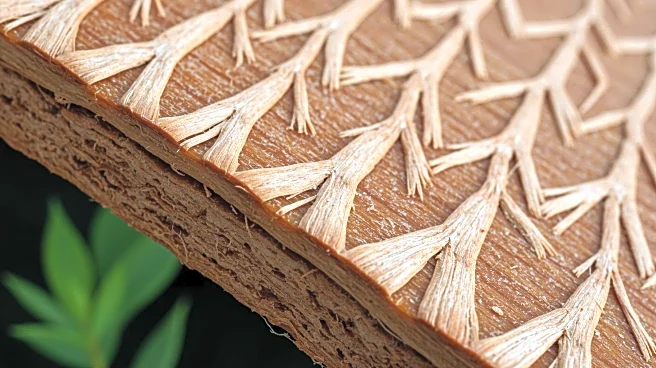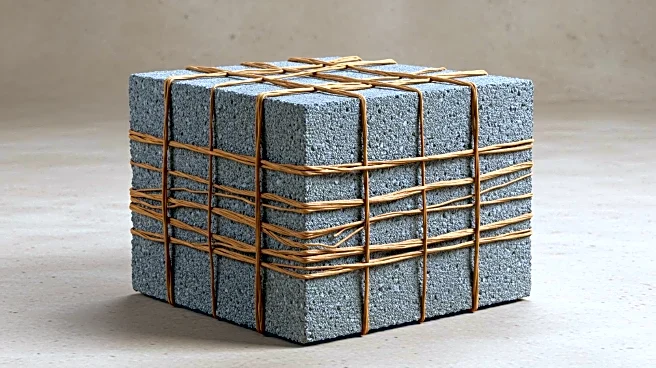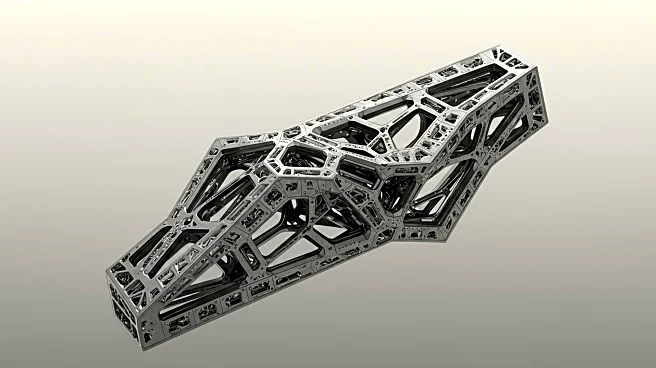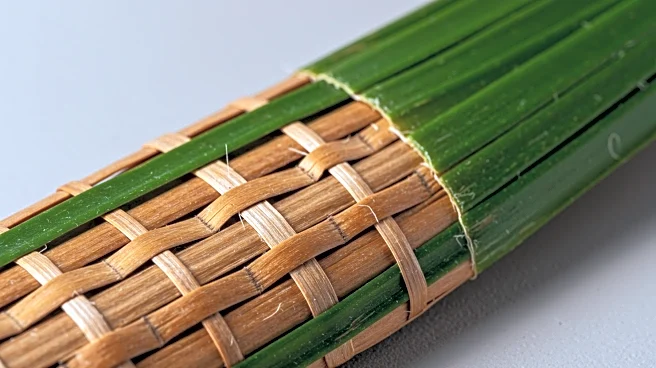What's Happening?
Recent research has focused on the mechanical properties of Pineapple Leaf Fibre (PALF)-reinforced polymer composites. The study involved tensile testing of these composites, adhering to ASTM standards, to evaluate their performance. The tests were conducted using an Electronic Tensometer, with specimens subjected to controlled conditions. Results indicated that PALF composites, particularly those with a 5% volume fraction in a polyester resin matrix, exhibited an ultimate tensile strength of 9 MPa. The study highlighted the importance of fiber treatment and matrix compatibility in enhancing the mechanical properties of these biocomposites. The findings suggest that PALF-reinforced composites have significant potential for structural applications due to their strength, durability, and eco-friendliness.
Why It's Important?
The research on PALF-reinforced biocomposites is significant as it offers insights into developing sustainable materials with enhanced mechanical properties. These composites could play a crucial role in industries prioritizing eco-friendly solutions, such as aerospace, automotive, and biomedical sectors. The high tensile strength and durability of PALF composites make them suitable for applications requiring robust materials. Additionally, the study underscores the potential of natural fibers in reducing environmental impact, aligning with global sustainability goals. Industries stand to benefit from the cost-effective and environmentally friendly nature of these biocomposites, potentially leading to broader adoption in various applications.
What's Next?
Further investigations are expected to focus on optimizing fiber treatments and resin formulations to enhance the mechanical properties of PALF composites. Researchers may explore the incorporation of compatibilizers to improve fiber-matrix bonding, thereby increasing the strength and versatility of these materials. The study opens avenues for developing advanced biocomposites tailored for specific industrial applications, potentially leading to innovations in material science. Stakeholders in the manufacturing and engineering sectors may consider investing in research and development to capitalize on the benefits of PALF composites.
Beyond the Headlines
The study of PALF composites highlights the broader implications of using natural fibers in material science. The carbon-rich nature of these composites suggests potential applications in industries where carbon-based materials are valued, such as electronics and environmental remediation. The research also points to the importance of fiber orientation and matrix adhesion in determining mechanical properties, offering insights into the complex interactions within composite materials. This could lead to advancements in the design and production of biocomposites, fostering innovation in sustainable material development.











